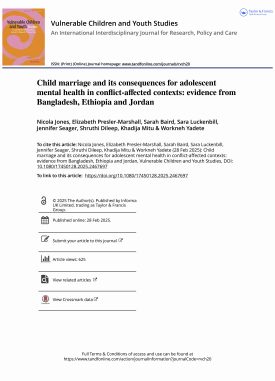Informed by the emerging evidence base on adolescent wellbeing and development, GAGE’s conceptual framework focuses on the interconnectedness and dynamism of what we call ‘the 3 Cs’: Capabilities, Change strategies and Contexts in order to understand what works to support adolescent girls’ development and empowerment – now and in the future.
The first building block of our conceptual framework are capability outcomes. The framework discusses the individual and collective capabilities that underpin adolescent wellbeing, and the challenges that need to be overcome across six key capability sets – education and learning, bodily integrity (including freedom from sexual and gender-based violence and child marriage), physical and reproductive health and nutrition, psychosocial wellbeing, voice and agency and economic empowerment.
The second building block refers to the policy and programming change strategies needed to support adolescent girls’ subjective experiences across these capability domains as well as the objective capability outcomes they achieve, including in comparison with their male peers.
The third building block highlights the importance of context dependency, i.e. the role that family, community, state and global context factors play in shaping the effectiveness of different change strategy approaches.
The paper ends by presenting the GAGE research questions that emerge from this conceptual framing. This formative document will provide the road map for the GAGE programme over the next eight years.
Suggested citation
GAGE Consortium (2017) Gender and Adolescence: why understanding adolescent capabilities, change strategies and contexts matters. GAGE conceptual framework. London: Gender and Adolescence: Global Evidence. (https://www.gage.odi.org/publication/gage-conceptual-framework/)


